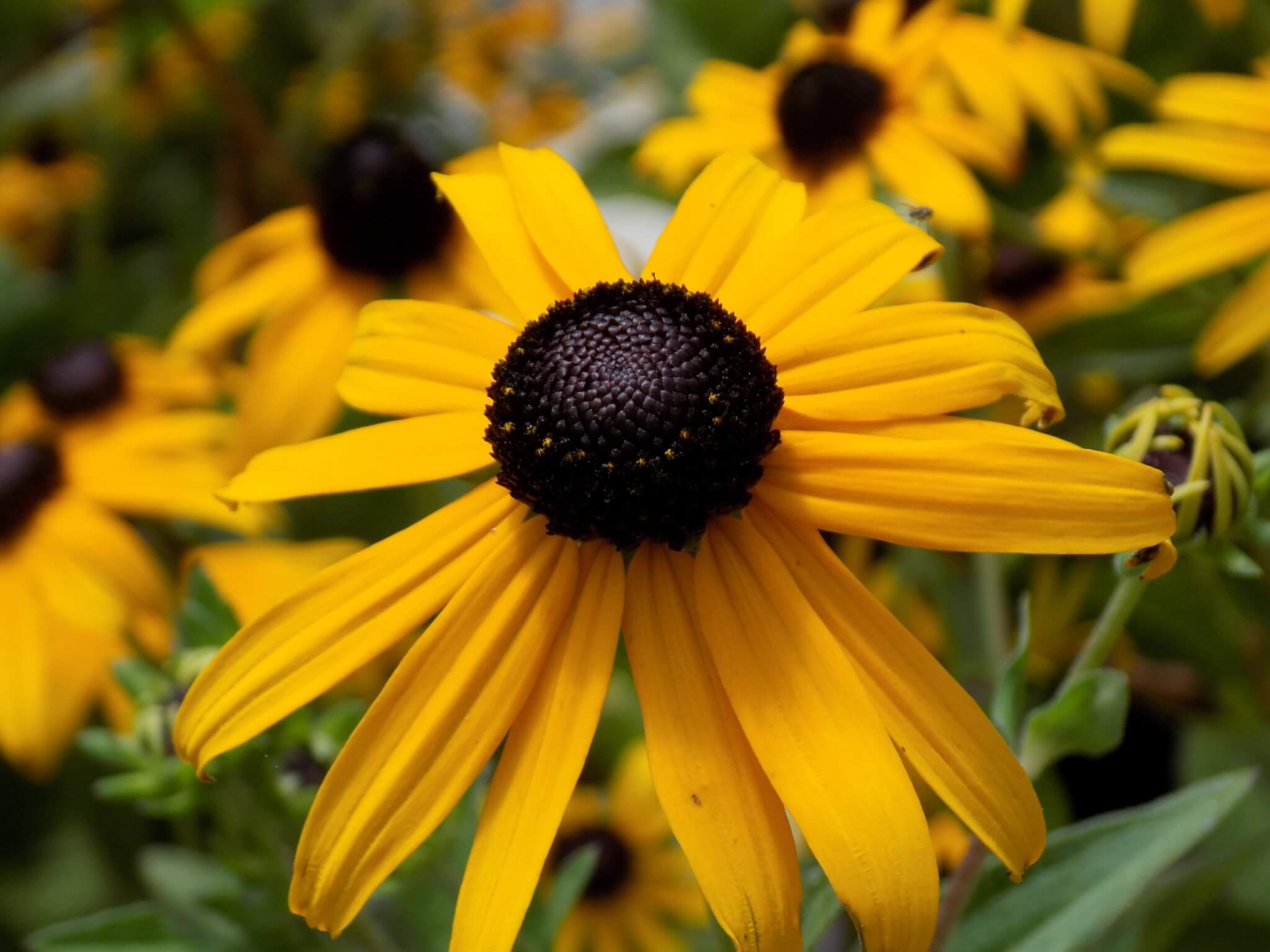Native Plants
Native plants are an important part of our ecological heritage and endangered wildlife and pollinator habitats. They are uniquely suited to challenges associated with our soils and climate. Design and maintenance are a little different with natives than with traditional plantings, so here are some tips to help you get started.
Mother Nature: The Ultimate Landscape Designer
Visit a wild place with the characteristics you want in your landscape. Pick out the elements that define the space, then exaggerate the number of those plants to amplify the character of the space and repeat them to create a coherent design. In wild areas, plants form communities. They grow better as groups, rather than as isolated individuals. Place plants close enough together so they grow together at maturity. Native landscapes are often planted one plant per square foot. Small groundcovers can work to bridge the gap between larger plants so the design legibility is not compromised.
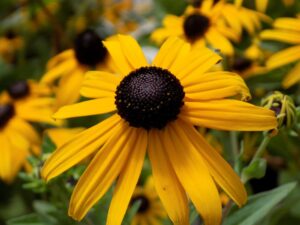
Using “Nativars”
Nativars are plants that were selected from native plant species because of a specific trait: size, brighter flowers, better structure, less aggressive habit, or improved disease resistance. There is research that suggests they may have less value to wildlife because of color and height changes, but some of these plants may fit better into smaller landscapes, or fill in a seasonal theme that might be lacking. We love a balanced blend of natives with some cultivated varieties.
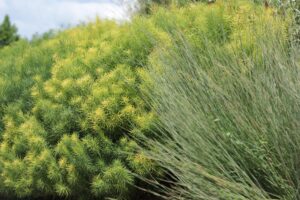
Creating the Structure
These plants could be trees, shrubs, large grasses or perennials with distinctive silhouettes that anchor the eye and provide structure, even during the winter. They should be 10-15% of the landscape.
Try sand cherry, leadplant, false indigo, Joe Pye weed, Culver’s root, big bluestem, Indian grass, or switchgrass.
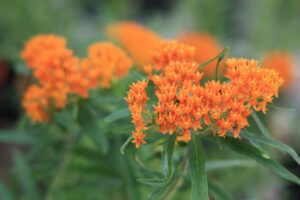
Seasonally Changing Themes
These plants are used in large masses to create visual impact during different times of the year. In native landscapes these plants often reseed, multiply, and move around, and that’s ok! They should be 25-40% of the landscape.
Think of iconic 1-3 foot plants that define each season: early-blooming pasqueflower and phlox; showy summer flowers like beebalm, coneflower, milkweeds, and yarrow; and fall color favorites like asters, goldenrod, rudbeckia, and grasses.
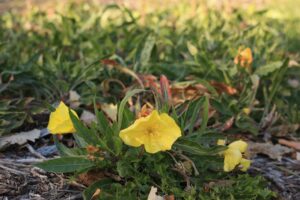
Functional Plants
These plants are typically ground covers that hug the earth underneath showy plants and support the health of the landscape by suppressing weeds, cooling the soil, and preventing erosion. These make up 30-50% of the landscape.
Try poppy mallow, primrose, wild petunia, sedges, geraniums, or prairie smoke
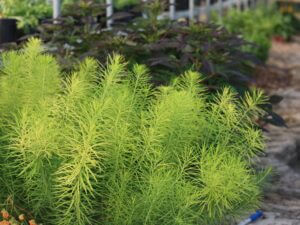
Leave a Little Mess
Natural landscapes sustain themselves without becoming depleted by recycling old, dead plant matter into nutrients. Removing these resources makes plants more dependent on inputs from us to survive. Try cutting down old plant material in late winter and mulching it with a mower to jump-start the decomposing process that feeds plants during the growing season.
